Camera
I'm a Canon guy, and have been shooting with Canon for the last five years or so. I have nothing against Nikon, Pentax, or Olympus and I think all three companies make great cameras and lenses. A few years back when I was in the market to move from point & shoot cameras to a DSLR, I was looking for an entry level outfit that would deliver quality performance for a reasonable price. I finally found what I was looking for in a lightly used Canon EOS Rebel XT with a standard kit lens. I was a newbie to DSLRs and it took me awhile to get ahold of shooting in full manual mode, but eventually I started to get the hang of it. Over the past few years, I've updated my camera body to a Canon EOS Rebel XTi and have added several accessories including two lenses and an external flash unit. My current outfit includes the standard Canon 18-55mm kit lens, a Canon 100mm f/2.8 USM macro, a Tamron 75-300mm telephoto, and a Canon Speedlite 430EX II flash with a Sto-fen Omni-bounce diffuser.
My camera outfit is by no means robust, but for now I'm satisfied with the results I get from a relatively modest arsenal. The Rebel XTi is a compact DSLR that features come aspects of higher level DSLRs, but also makes digital photography relatively user friendly for the shooter. Eventually, I'd like to upgrade to one of Canon's higher level models (40D, 7D, or 5D Mark II) but as of now those are out of my price range and I'm happy with the images I get with my current setup. The first lens I'll touch on is the standard Canon EF-S 18-55mm kit lens that came with the camera. Though it is a pretty cheap lens, if used correctly it can deliver some pretty nice shots. I've found it to be particularly useful because of its wide angle capabilities for capturing "in habitat" photos of herps. Armed with a polarizing filter, I've been extremely happy with some of the shots I've gotten out of this little crappo lens.
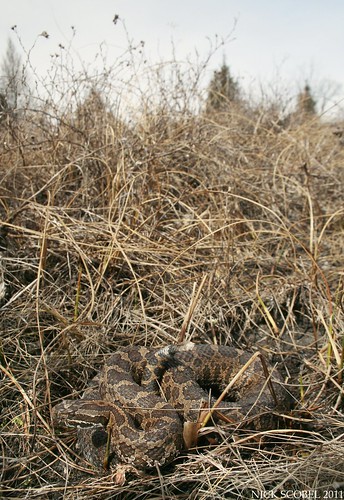
Eastern Massasauga, Sistrurus catenatus, Canon Rebel XTi, Canon 18-55mm, natural lighting & fill flash
Cottonmouth, Agkistrodon piscivorus, Canon Rebel XTi, Canon 18-55mm, natural lighting & fill flash
Northern Leopard Frog, Rana pipiens, Canon Rebel XT, Canon 18-55mm, natural lighting & fill flash
Using a combination of natural light & fill flash seems to produce to best results for me, I've found that a little flash can help reduce some of the harsh shadows and help liven the photo. The most recent lens that I bought was the Tamron 75-300mm telephoto. I was looking for a telephoto zoom lens that had a decent reach at a relatively cheap price, and I found the Tamron for just over $100. It's a pretty slow lens (f/4.5-f/5.6) that is worth the money I paid for it, but all I really needed was something that would help me reach basking turtles of nearby birds, and I was willing to sacrifice speed for price. Though its not a great lens, it has performed decently enough for me in the field, especially from a kayak while looking for turtles. Here's a few of the shots this lens has pulled for me.
Wood Turtle, Glyptemys insculpta, Canon Rebel XTi, Tamron 75-300mm, natural lighting & fill flash
Northern Map Turtle, Graptemys geographica, Canon Rebel XTi, Tamron 75-300mm, natural lighting
Peninsula Cooter, Pseudemys peninsularis, Canon Rebel XTi, Tamron 75-300mm, natural lighting
The final lens I'll comment on is the Canon 100mm f/2.8 USM macro lens. This is by far the best lens I have and it has been worth every penny I paid for it. 95% of the herp photos I take are with this lens, simply because of how sharp & fast it is. Though I almost always use manual focus, the USM (ultrasonic motor) that powers the auto focus is extremely fast and quiet and the sharpness of the images it produces is astounding.
This setup utilizing the Canon Revel XTi, Canon 100mm f/2.8, and Canon Speedlite 430EX II comprises almost 90% of the herp photos I take. Though simple, the ability to direct the flash head up, down, left, or right can help lighting significantly and the Sto-fen Omni-bounce diffuser helps soften the light a little bit. The macro lens is incredibly versatile and delivers images of large and tiny specimens that are sharp as a tack.
Eastern Diamondback Rattlesnake, Crotalus adamanteus, Canon Rebel XTi, Canon 100mm f/2.8, fill flash
Eastern Box Turtle, Terrapene carolina, Canon Rebel XT, Canon 100mm f/2.8, fill flash
Eastern Massasauga, Sistrurus catenatus, Canon Rebel XT, Canon 100mm f/2.8, natural lighting
As I mentioned before, my camera aresenal is limited but functional, and I'm quite happy with the results I've gotten from it. In the future, I'd like to upgrade to a professional model of camera and maybe get another lens or two, but for now I'm just fine. Other important items that I carry in my bag are a GPS unit and a headlamp. The GPS unit is a Garmin eTrex model that is a few years old, but its functional and lets me record any important coordinates while in the field. I recently purchased a new headlamp, the Fenix HP10. It is the brightest headlamp on the market that runs on AA batteries. It has four light setting ranging from 7-225 lumens and a battery life of 18 hours at the lower settings. It is waterproof up to fifty feet under water and has been awesome in the field thus far. So as Jason said, what's in your bag?

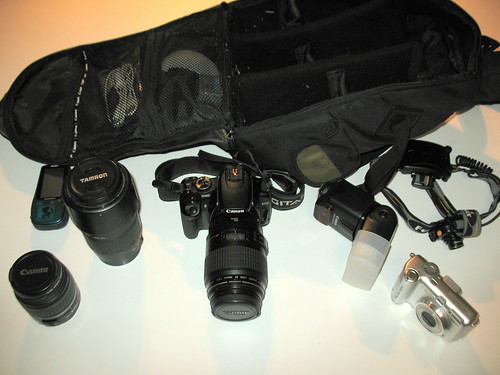
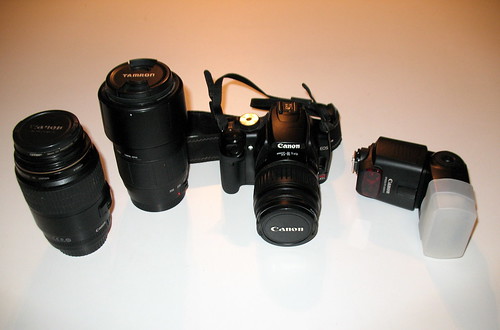

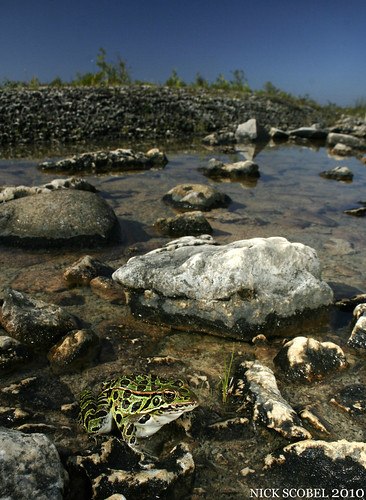
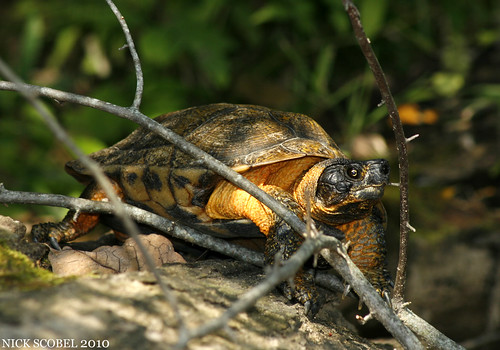
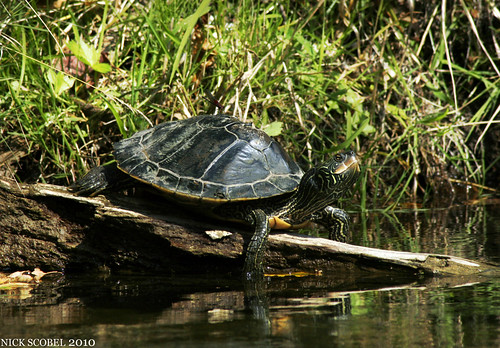

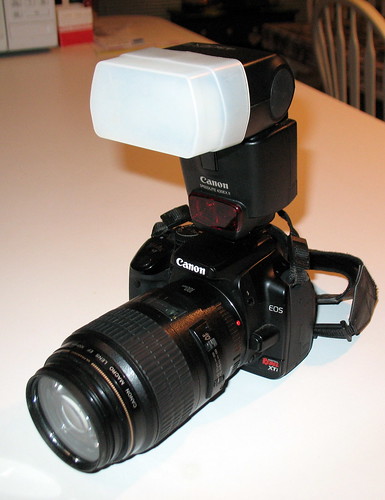
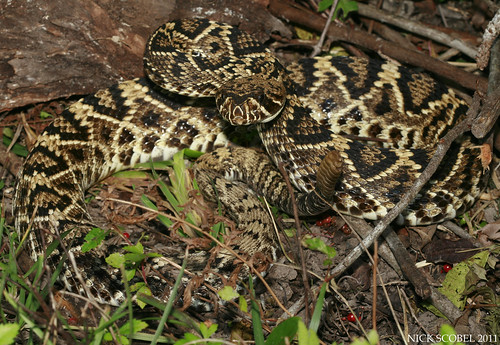


Nice! How zoomed in were you for the turtle shots? I hate that you ditch your metadata... For shooting herps, all you really need is a sharp macro and some creative lighting options. Flashes make things easy but by are no means the only way to skin a cat. Unfortunately, we abuse ourselves by living in Michigan, thus making it necessary to have a zoom for the turtles. I never really needed one in Ohio.
ReplyDeleteBH
Thanks Jason. The Wood Turtle shot was taken at 192mm, as we were pretty close to it and I was pulled offed along a log in front of the turtle. The Map turtle was shot at the full extent of 300mm as they usually drop in even when you're a far distance off. And the cooter was also taken at 300mm.
ReplyDeleteFor maximum flexibility and ease of use, the Speedlite 430EX II incorporates a number of new features. Recycle times have been reduced by approximately 20%, with the recycle process performed silently to minimise distraction. A new metal mounting foot with redesigned connection pins provides ultra-stable communication between the camera and flash for rapid connection to the camera, a new quick release and locking mechanism is also incorporated.
ReplyDeleteRex
canon speedlite 430ex
Nice! How zoomed in were you for the turtle shots? I hate that you ditch your metadata... For shooting herps, all you really need is a sharp macro and some creative lighting options.
ReplyDeleteThanks for sharing such informative content. I would like to tell you about my blog Camera hard cases